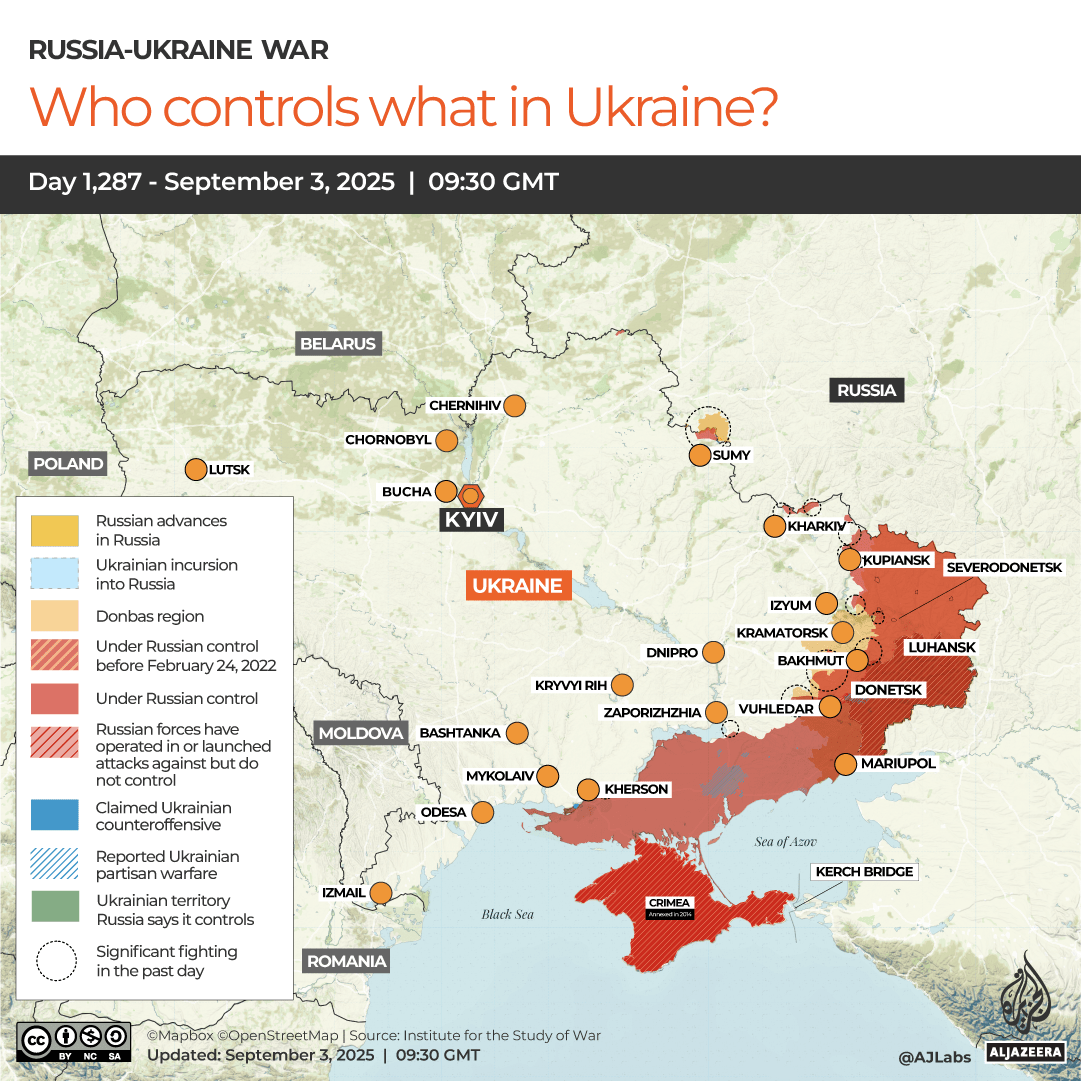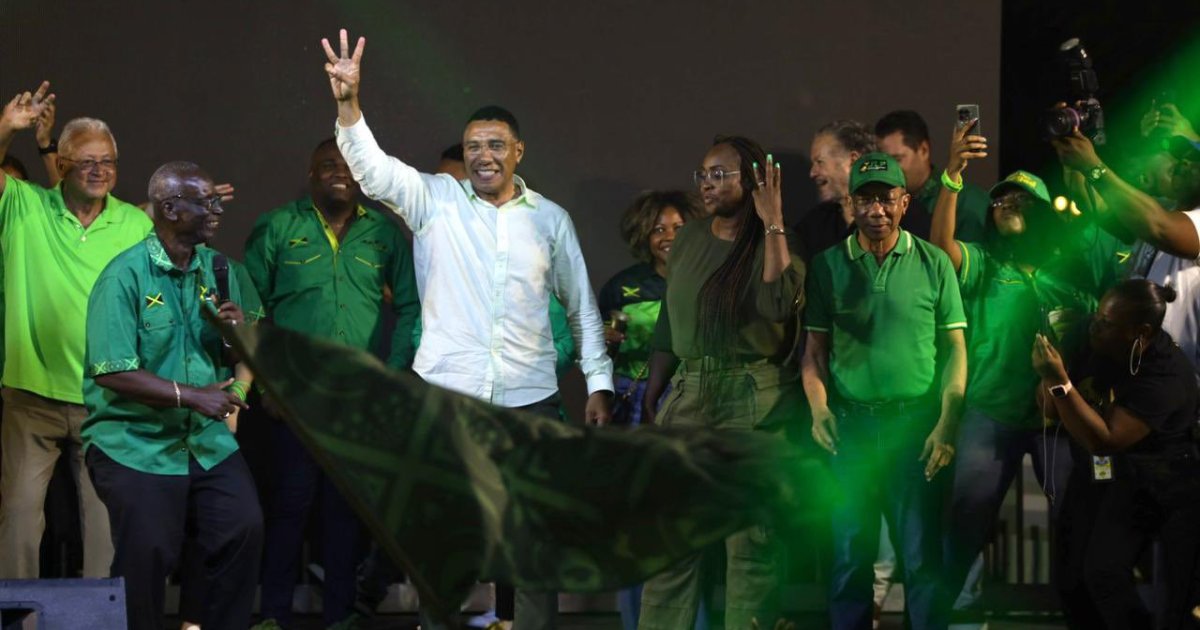In the past week, Russia’s refineries were hit severely by Ukraine, worsening its gasoline shortages and causing Moscow to impose a ban on petroleum products exports.
Russia launched a deadly attack on Kyiv in response, and Ukraine’s situation looked desperate as it awaited its turn to surrender.
Vladimir Putin, the president of Russia, suggested that Russian energy exports to China and India were on the rise during his speech at the Shanghai Cooperation Organization (SCO) summit, but reports suggested that Moscow is holding onto its crude oil for a while.
In order to broker a ceasefire, Ukraine’s European and regional allies are holding a meeting on Thursday to discuss finalizing security arrangements, and they are also urging US President Donald Trump to use sanctions to pressure Putin into direct talks with Kyiv.
Russian offensive operations
On September 1, Russia redeployed elite units, including marines and paratroopers, from Ukraine’s northern Sumy region to Donetsk, suggesting that it may be reviving its efforts to defend the city of Pokrovsk, which Ukraine has identified as a crucial strategic goal for Russia since August 2024.
After fierce Ukrainian resistance, Russia gave up on an offensive for Dobropillia, a town whose capture would have encircled Pokrovsk from the north.
Last week, Dobropillia and Pokrovsk, along with Lyman, a city further north, were confirmed by the commander-in-chief of the Ukrainian Armed Forces, Oleksandr Syrskii.
The so-called “fortress belt” of cities, which includes Sloviansk, Kramatorsk, Druzhivka, and Konstiantynivka, is located between Lyman and Pokrovsk, which is considered to be one of Ukraine’s most heavily fortified regions of the front, suggesting that Russia may be planning to encircle the area rather than launch a direct assault.
Russian Chief of the General Staff Valery Gerasimov stated on Saturday that the Russian “unstoppable offensive” had taken over 3,500 square kilometers (1,350 square miles) and 149 settlements since March and that Putin would travel to Tianjin, China, on Sunday to attend the SCO summit.
The Institute for the Study of War, a think tank based in Washington, concluded that since March, Russian gains have totaled 2, 346 square kilometers and 130 settlements, according to the Institute for the Study of War.
Russian Defense Minister Andrei Belousov claimed on Friday that “we were liberating 300 to 400 square kilometers monthly, and this figure has increased to 600 to 700 square kilometers.” The ISW disagreed. According to The ISW, Russia had taken 445 square kilometers in July and about 500 square kilometers in August.
Andriy Kovalenko, the head of the Center for Countering Disinformation in Ukraine, disagreed with Gerasimov’s claim that the north had taken up all of Kupiansk.
On the Telegram messaging service, he wrote, “All the fantasies of Russian war correspondents about control over half of Kupiansk up to the center do not correspond to reality.” “Propagandists do their job first, then runners with flags run around while a drone records them, and then propagandists film them.”
For the first time since 2022, Russia enjoyed operational success in the western Black Sea, losing both control of Zmiinyi Island and its flagship guided missile cruiser Moskva.
In a drone strike at the Danube river’s mouth on August 28, the Russian Ministry of Defense announced the sinking of the Ukrainian reconnaissance ship Simferopol. A ship matched the Simferopol, and separate footage captured an explosion. Surface kamikaze drone footage depicts an approach.
In the western Black Sea, Ukraine was the first to successfully sink Russian ships using naval drones. This may be the first time that Russia has successfully applied the same strategy to waters off the coast of the European Union.
Russia launched its largest aerial assault on Kyiv on the same day, aiming 598 drones and 31 missiles there.
After two missiles destroyed a residential building in the Darnytskyi neighbourhood, the death toll eventually reached 26, including four children. The following day, Volodymyr Zelenskyy, the president of Ukraine, deposited flowers there.
Russia launched 2, 189 drones, and 108 missiles at Ukraine’s front-line cities between August 28 and September 3. 88 percent of the drones and 79 percent of the missiles were intercepted by Ukraine.

Russian refineries targeted by Ukrainians
On August 28, Ukraine returned to the Black Sea when its military intelligence struck the ship with two drones, making it inoperable.
But it made primarily efforts in Russia.
Ukrainian drones also targeted the Kuibyshev refinery in the Samara region of Russia, which is located 1, 000 kilometers east of Ukraine. Afipsky refinery in Krasnodar Krai, located 400 kilometers outside of Ukraine, was also struck by them.
According to Ukrainian officials, the two refineries are essential to the Russian war machine because they process more than 13 million tonnes of oil annually, accounting for just under 5% of the country’s total.
According to industry sources, Kuibyshev’s two main refining units had been hit and had stopped all oil processing. Following a Ukrainian strike on August 2, processing had only resumed a week prior.
The Krasnodar and Syrzan refineries, both of which have previously been struck, were hit by drones on Friday, according to Kovalenko. Officials from Krasnodar acknowledged a fire at their facility after the footage obtained revealed the Syrzan hit.
According to Reuters, Ukraine reportedly accounted for 17% of Russian refining capacity in August alone.
The figure was 21%, according to Robert “Magyar” Brovdi, the head of Ukraine’s Unmanned Systems Forces.
Russia extended its export ban on refined petroleum products by a month until October 31 in an effort to maintain “a stable environment in the domestic fuel market.” Since March 1, the ban has been in effect.
Russian authorities have documented occupied territory rationing in Russia. Because it couldn’t process the crude oil itself, Russia announced it would try to increase its daily exports by 200, 000 barrels.
Even so, crude oil is sold for less than refined goods, but reports last week suggested that Russia was actively discounting its crude oil in an effort to attract customers. Indian refiners were offered a $4 per barrel discount from the previous week’s $2.5 and $1.7, respectively, in accordance with Bloomberg’s report.
Russia’s exports, which provide money for its war economy, have also been restricted by Ukraine.
Due to Ukrainian drone damage to the pipeline, officials at the Ust-Luga export terminal near St. Petersburg announced last week that the terminal would be operating at half of its capacity.
Without using Western weapons, Ukraine has been developing its own long-distance kill vehicles, which are frequently used only to attack deep inside Russia.












